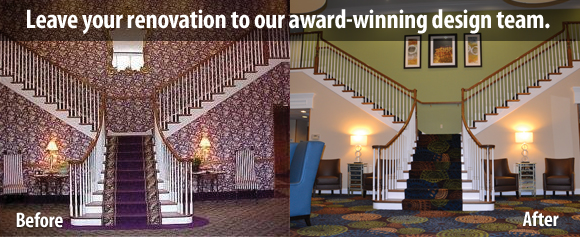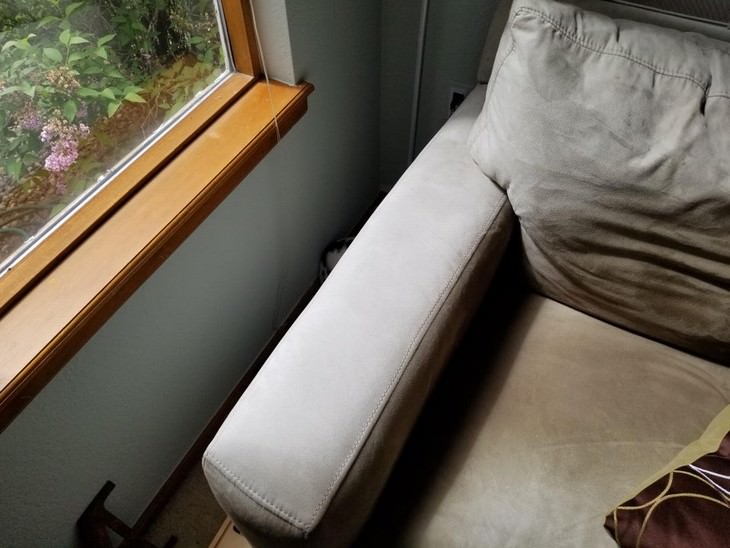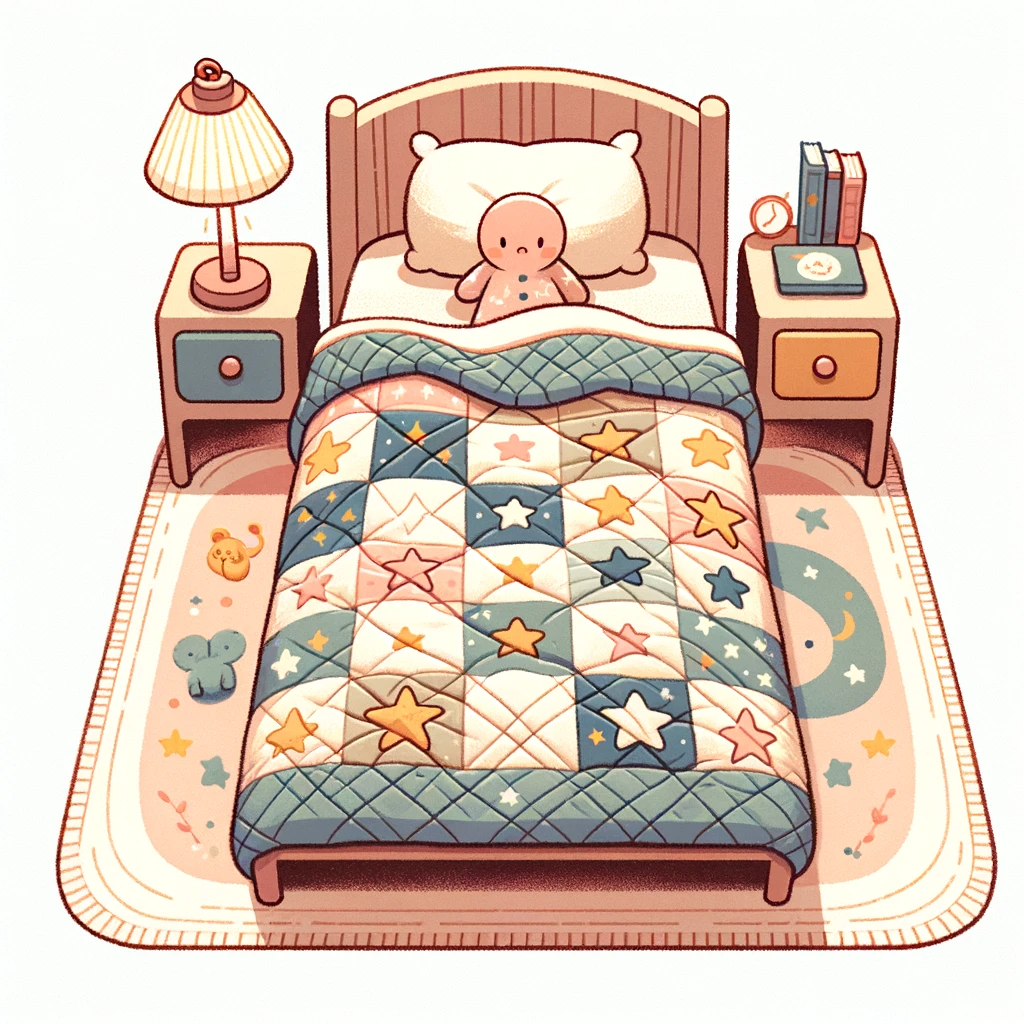How to Make Your Furniture Last Longer and Save You Money in the Long Run!


Introduction
Are you tired of constantly replacing your furniture and spending a fortune on new pieces every few years? Well, the good news is that there are simple steps you can take to make your furniture last longer and save money in the long run.
Why making furniture last longer is important
Taking care of your furniture and ensuring it lasts as long as possible has a variety of benefits:
-
Save money: Furniture is a significant investment, and replacing it frequently can strain your budget. By extending the lifespan of your furniture, you can avoid unnecessary expenses and use your hard-earned money elsewhere.
-
Eco-friendly choice: The manufacturing of furniture consumes natural resources and contributes to environmental pollution. By making your furniture last longer, you reduce the need for new manufacturing, which in turn helps to conserve resources and reduce your carbon footprint.
-
Preserve sentimental value: Certain pieces of furniture hold sentimental value, such as heirlooms or pieces passed down through generations. By maintaining and preserving these pieces, you can continue to enjoy their sentimental significance and pass them on to future generations.
-
Enhance personal aesthetics: Furniture plays a crucial role in creating the ambiance and style of a space. By keeping your furniture in good condition, you can ensure that your home or office reflects your personal aesthetics and provides a comfortable and visually appealing environment.
Benefits of extending the lifespan of furniture
Taking the time to care for your furniture and extending its lifespan offers numerous advantages, including:
-
Reduced maintenance: Regular maintenance routines, such as cleaning and repairs, are less frequent when you take proper care of your furniture, saving you time and effort.
-
Improved quality: Well-maintained furniture retains its quality over time, providing durability and comfort for years to come.
-
Increased resale value: Should you ever decide to sell or upgrade your furniture, well-maintained pieces will have a higher resale value, allowing you to recoup some of your initial investment.
-
Pride of ownership: There's a certain satisfaction that comes from knowing you've taken care of your belongings and made them last. Extending the lifespan of your furniture brings a sense of pride and accomplishment.
By following simple maintenance routines, using protective measures, and repairing any damage promptly, you can ensure that your furniture remains in great condition, lasts longer, and offers the benefits mentioned above.

Choosing the Right Quality Furniture
When it comes to purchasing furniture, you want pieces that will stand the test of time and provide you with long-lasting comfort and style. So, how can you ensure that your furniture lasts longer?
Factors to consider when purchasing furniture
-
Quality: Look for furniture made with high-quality materials and craftsmanship. Check for sturdy frames, durable upholstery, and strong joints. Investing in quality pieces upfront will save you money in the long run.
-
Functionality: Consider how you will be using the furniture. If it will receive heavy daily use, opt for materials and designs that can withstand wear and tear. Choose fabrics that are easy to clean and maintain.
Tips for selecting durable and long-lasting materials
-
Wood: Solid wood furniture, such as oak or maple, is known for its durability. Look for pieces made with hardwood rather than softwood, as it is more resistant to scratches and dents.
-
Metal: Metal furniture, like stainless steel or aluminum, is strong and resistant to damage. It is a great choice for outdoor furniture or areas with high moisture and humidity.
-
Upholstery: Opt for fabrics treated with stain-resistant and fade-resistant finishes. Leather and microfiber are durable options that offer both comfort and longevity.
-
Construction: Check the construction details of the furniture, such as reinforced corners, double-stitched seams, or kiln-dried wood frames. These features contribute to the overall durability of the piece.
-
Maintenance: Follow the manufacturer's care instructions to keep your furniture in good condition. Regular cleaning and occasional maintenance will help extend its lifespan.
Remember, investing in quality furniture and taking proper care of it will ensure that it stays beautiful and functional for years to come.

Proper Cleaning and Maintenance
If you want your furniture to stand the test of time, taking proper care of it is essential. By implementing some simple cleaning and maintenance practices, you can extend the lifespan of your furniture and keep it looking its best for years to come.
Best practices for regular cleaning and upkeep
-
Dust regularly: Dust can accumulate on furniture surfaces and cause damage over time. Use a soft cloth or a duster to remove dust from your furniture regularly.
-
Protect from sunlight: Extended exposure to direct sunlight can cause fading and other damage to your furniture. Use curtains or blinds to shield your furniture from the sun's rays.
-
Avoid excessive moisture: Excessive moisture can lead to warping, staining, and mold growth. Use coasters for drinks, wipe up spills immediately, and maintain proper humidity levels in your home.
Using suitable cleaning agents and techniques for different materials
-
Wood: Use a mild soap and water solution or a specialized wood cleaner to clean wooden furniture. Avoid using harsh chemicals or abrasive cleaners that can damage the finish.
-
Upholstery: Vacuum upholstered furniture regularly to remove dust and dirt. Use a fabric cleaner or upholstery shampoo for stains, following the manufacturer's instructions.
-
Leather: Clean leather furniture with a damp cloth and a mild soap solution. Avoid using excessive water or harsh chemicals that can damage the leather.
Remember to always refer to the manufacturer's instructions for specific cleaning recommendations for your furniture.
Taking the time to properly clean and maintain your furniture will ensure that it lasts longer and remains in excellent condition. By following these best practices and using suitable cleaning agents and techniques, you can enjoy your furniture for years to come

Avoiding Common Mistakes
Mistakes to avoid that can cause damage to furniture
When it comes to keeping your furniture in top shape for years to come, avoiding common mistakes can make all the difference. Here are a few mistakes you should steer clear of:
-
Placing furniture near heat sources: Exposing your furniture to direct sunlight or heat sources like radiators can cause it to fade, warp, or crack. Be mindful of where you position your furniture to avoid unnecessary damage.
-
Not using coasters: Settling down with a refreshing cold drink after a long day is tempting, but placing that drink directly on your wooden furniture can leave unsightly water rings. Always use coasters to protect the surface.
-
Skipping regular dusting: Dust can accumulate on your furniture's surface and act as an abrasive agent, causing scratches over time. Regular dusting using a soft, lint-free cloth or a feather duster can prevent this.
Protecting against spills, stains, and scratches
Accidents happen, but taking proactive steps to protect your furniture can help minimize potential damage. Here's what you can do:
-
Use furniture covers: If you have children or pets, using furniture covers can protect against spills and stains. Opt for waterproof covers or those made from durable materials.
-
Invest in protective pads: Place felt pads on the legs and bases of your furniture to prevent scratches on hardwood floors or scratches caused by moving items.
-
Address spills promptly: When spills occur, blot the area immediately with a clean cloth or paper towels. Avoid rubbing, as this can spread the stain and push it deeper into the fabric.
Remember, taking care of your furniture today can save you money and prolong its lifespan. By avoiding common mistakes and taking protective measures, you'll enjoy your furniture for years to come.

Keeping Furniture in Good Condition
If you want your furniture to last longer and maintain its beauty, there are some simple steps you can take. By following these tips for proper storage and protection, as well as avoiding exposure to sunlight, humidity, and extreme temperatures, you can extend the life of your furniture and keep it looking great for years to come.
Tips for proper storage and protection
-
Keep it covered: When not in use, cover your furniture with protective covers or blankets. This will shield it from dust, dirt, and potential scratches.
-
Avoid sharp objects: Be mindful of sharp objects, such as scissors or knives, that could accidentally cause damage to your furniture.
-
Use coasters and placemats: Protect the surface of your tables and countertops by using coasters and placemats for drinks and hot dishes. This prevents stains and heat damage.
Avoiding exposure to sunlight, humidity, and extreme temperatures
-
Keep it out of direct sunlight: Prolonged exposure to sunlight can fade and damage furniture. Position your furniture away from windows or use curtains and blinds to block out the sun's rays.
-
Control humidity levels: Excessive humidity can cause wood furniture to warp and crack. Use a dehumidifier or air conditioner to maintain a stable humidity level in your home.
-
Avoid extreme temperatures: Fluctuations in temperature can also harm furniture. Keep it away from heat sources like heaters and fireplaces, and avoid placing it directly in front of air conditioning vents.
By implementing these simple strategies, you can ensure that your furniture remains in good condition and stands the test of time. Remember, taking a little extra care now can save you from costly repairs or replacements later.

Repairs and Restoration
As a furniture owner, you want your pieces to last as long as possible. Taking care of your furniture is essential to maintain its longevity and keep it looking its best. Here are a few tips on how to make your furniture last longer.
Knowing when to repair or restore furniture
-
Maintain Regular Inspections: Regularly inspect your furniture for any signs of damage, such as loose or weakened joints, cracked or chipped wood, or torn upholstery. Identifying these issues early allows you to address them before they worsen.
-
DIY Fixes: For minor repairs, such as tightening loose screws or fixing small scratches, you can do it yourself using simple tools and repair kits. Properly following instructions and using appropriate materials will help maintain your furniture's integrity.
Seeking professional help when needed
-
Complex Repairs: For more extensive damage or if you're unsure how to fix a problem, it's best to seek professional help. Furniture restoration experts have the knowledge and experience to handle complex repairs and ensure proper restoration techniques are used.
-
Upholstery Care: If your furniture has upholstery, professional cleaning and maintenance can help extend its lifespan. They can remove stains, repair tears, and ensure the fabric and cushioning remain in good condition.
Remember, proper care and maintenance play a significant role in extending the life of your furniture. Regular cleaning, using appropriate furniture polish or protectants, and avoiding exposure to extreme heat or sunlight are also essential practices to adopt.
By taking these steps, you can enjoy your furniture for many years to come.

Conclusion
Final thoughts on making furniture last longer
Congratulations on taking the initiative to make your furniture last longer! By following these simple tips, you can extend the lifespan of your furniture and ensure that it continues to look great for years to come.
-
Clean and dust regularly: Regular cleaning and dusting can prevent build-up that can damage the surface of your furniture. Use gentle cleaning products and a soft cloth to avoid scratching or causing any damage.
-
Protect from sunlight: Direct sunlight can cause fading and discoloration of furniture. To protect your furniture, consider using window treatments such as blinds or curtains and rearranging your furniture to avoid direct sun exposure.
-
Avoid excessive weight: Be mindful of the weight capacity of your furniture and avoid placing heavy objects on it. Overloading furniture can lead to structural damage and shorten its lifespan.
-
Use coasters and placemats: Using coasters and placemats can help prevent water marks, stains, and scratches on your furniture. Encourage family and guests to use these protective measures to preserve the condition of your furniture.
-
Keep pets away: Pets can cause scratches, stains, and other damage to furniture. Consider training your pets to stay off furniture or use pet-friendly furniture covers to protect your investment.
Remember, investing in high-quality furniture and taking proper care of it can save you money in the long run. By following these tips and giving your furniture the attention it deserves, you can enjoy its beauty and functionality for years to come.
Conclusion
To make your furniture last longer, take the time to clean and dust regularly, protect it from sunlight, avoid excessive weight, use coasters and placemats, and keep pets away from it. Taking these simple steps will help you extend the lifespan of your furniture and keep it looking great. So go ahead, show your furniture some love and enjoy its beauty and functionality for years to come.



